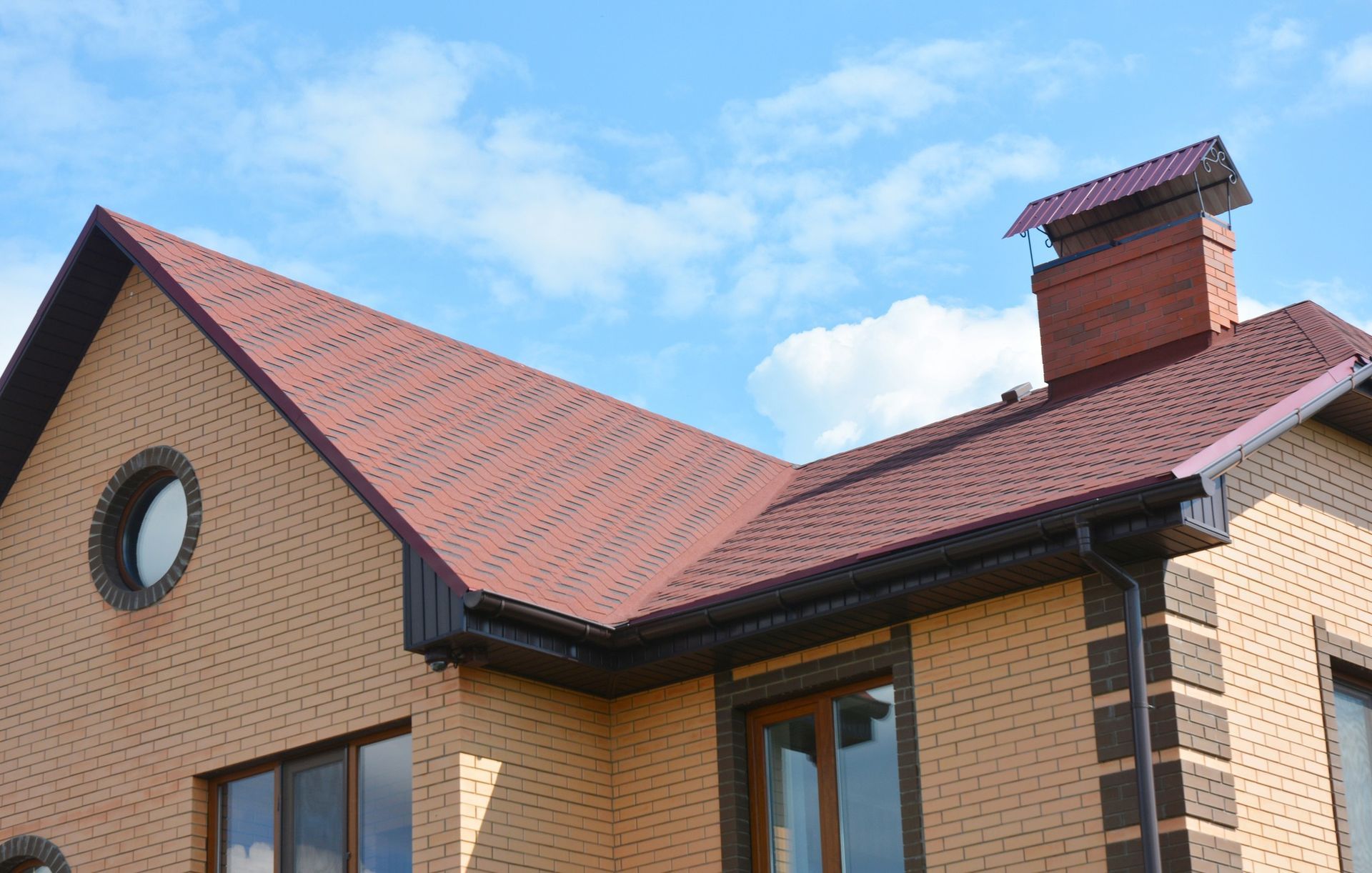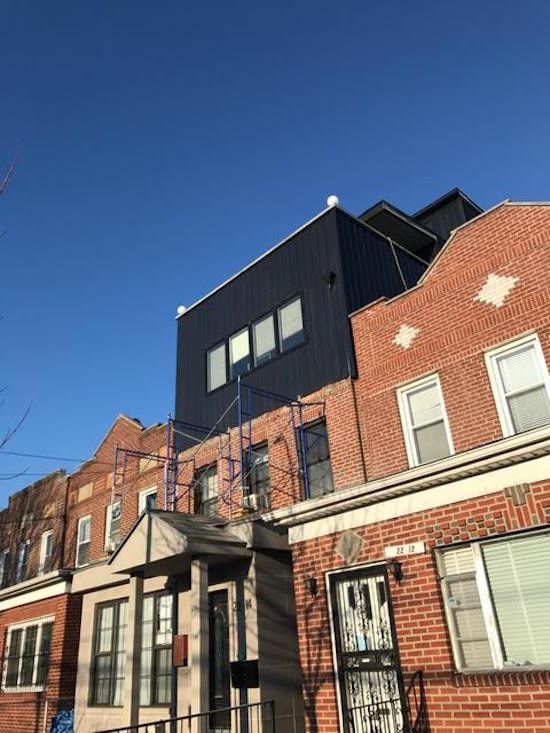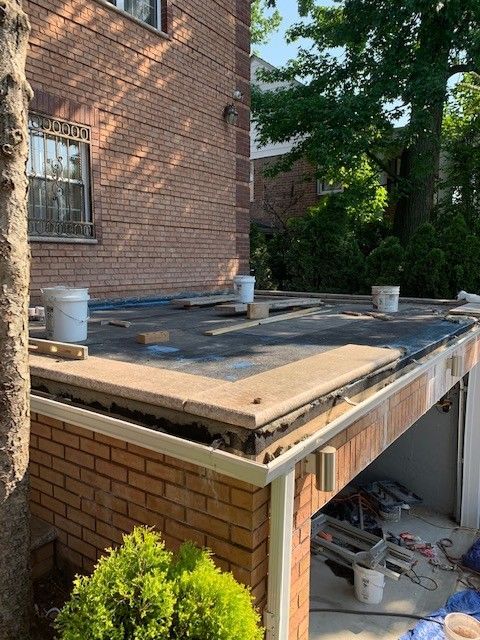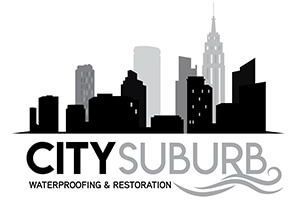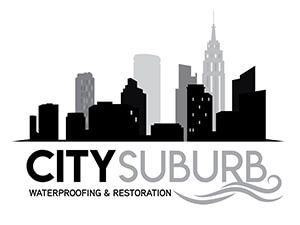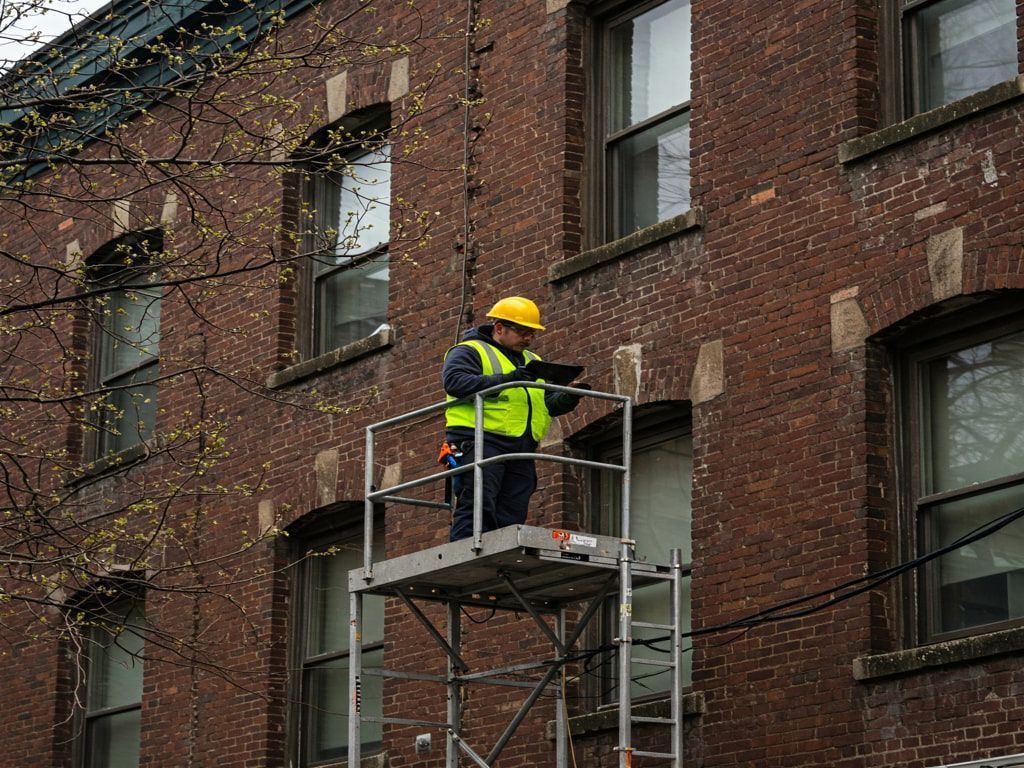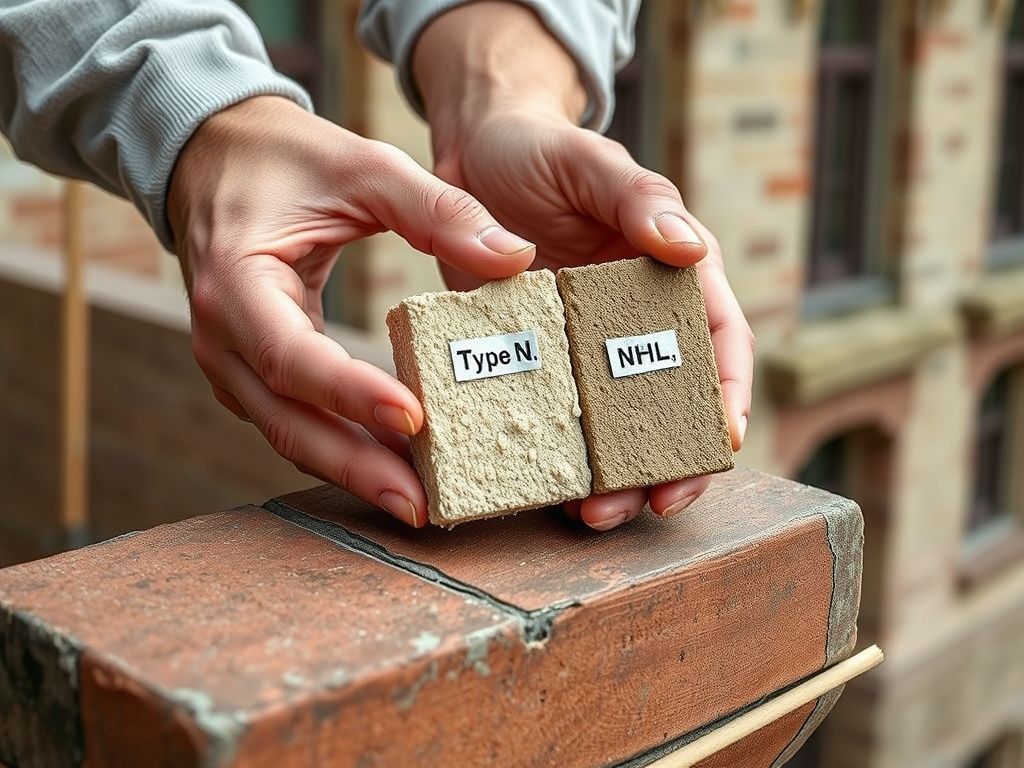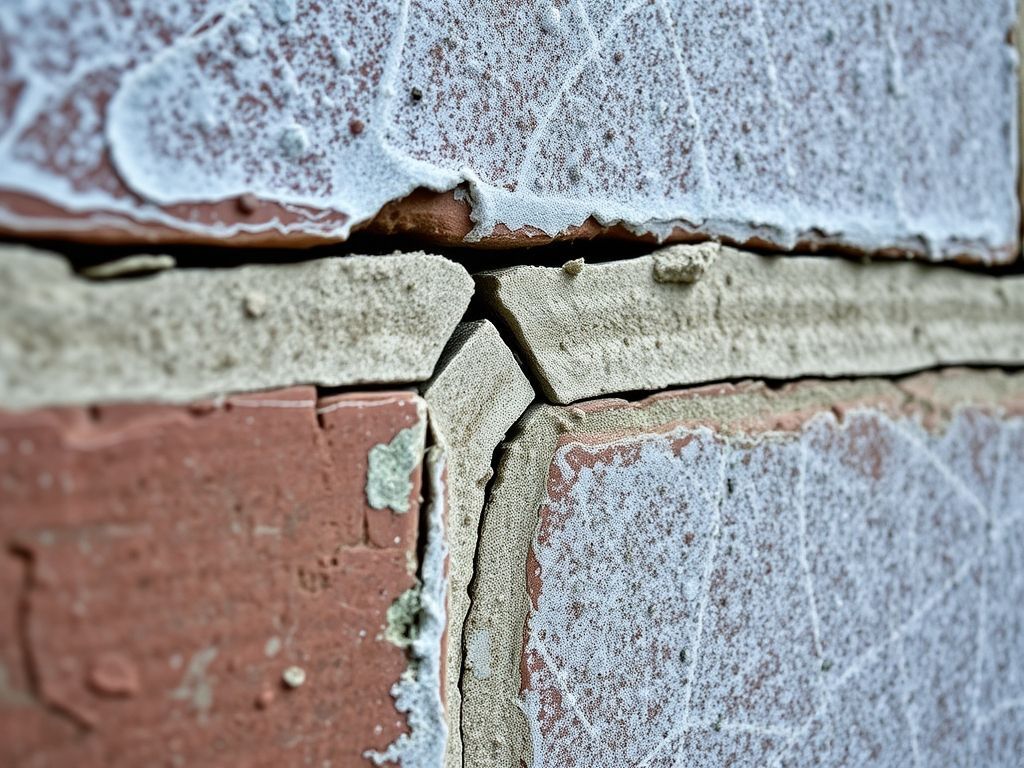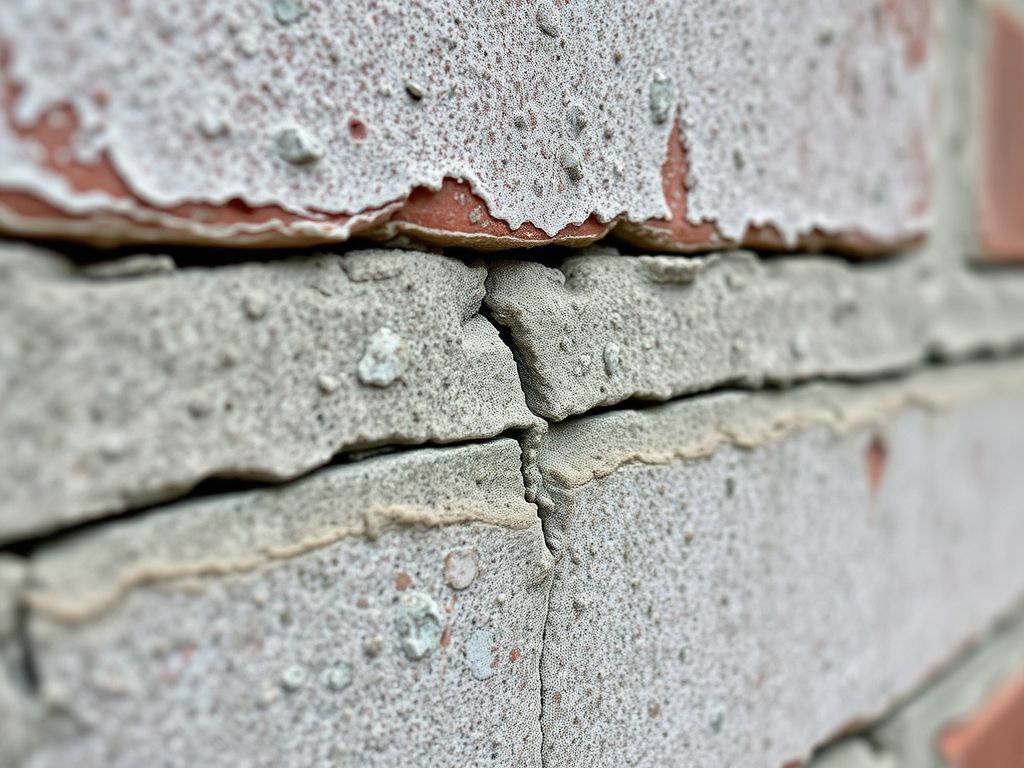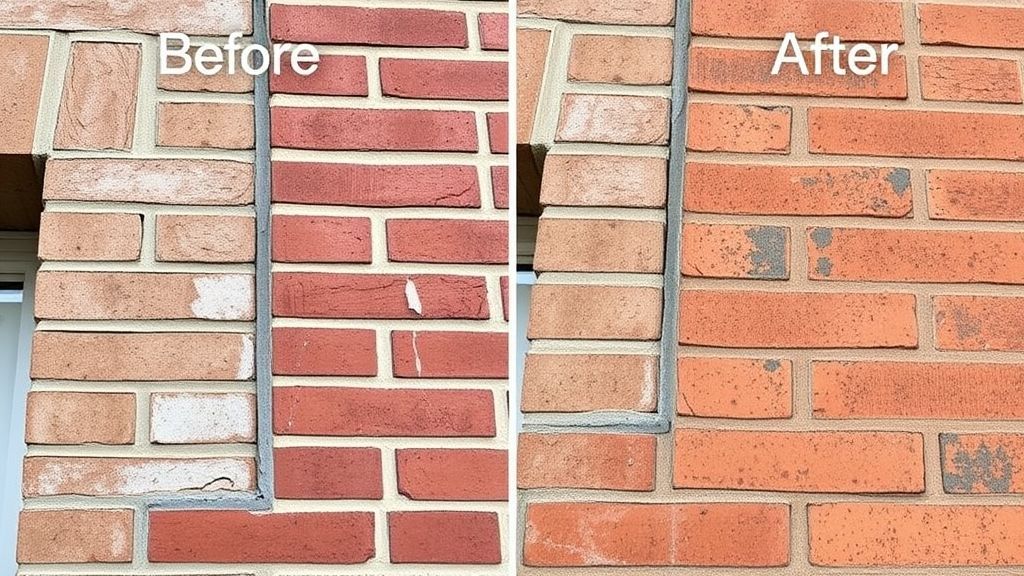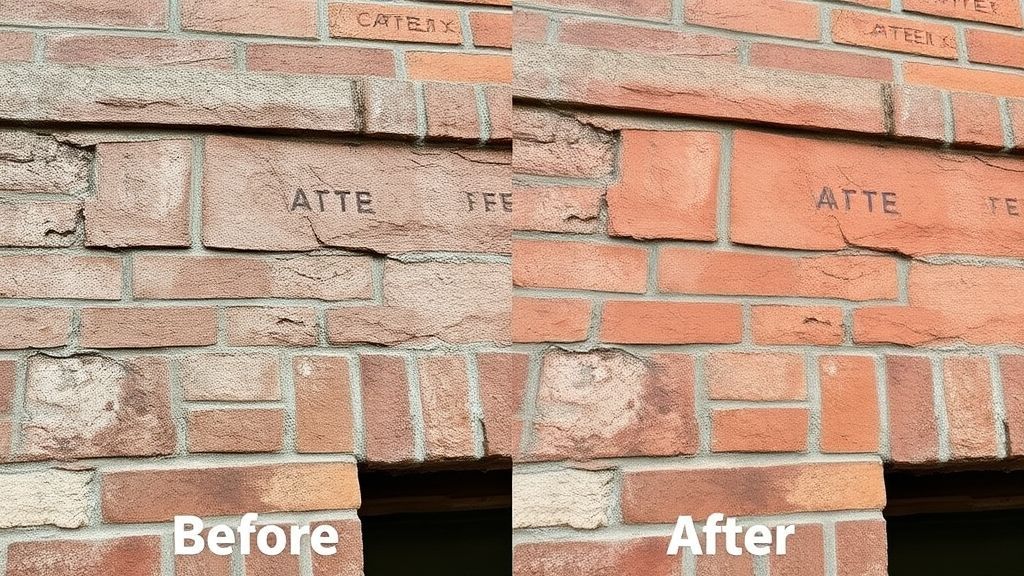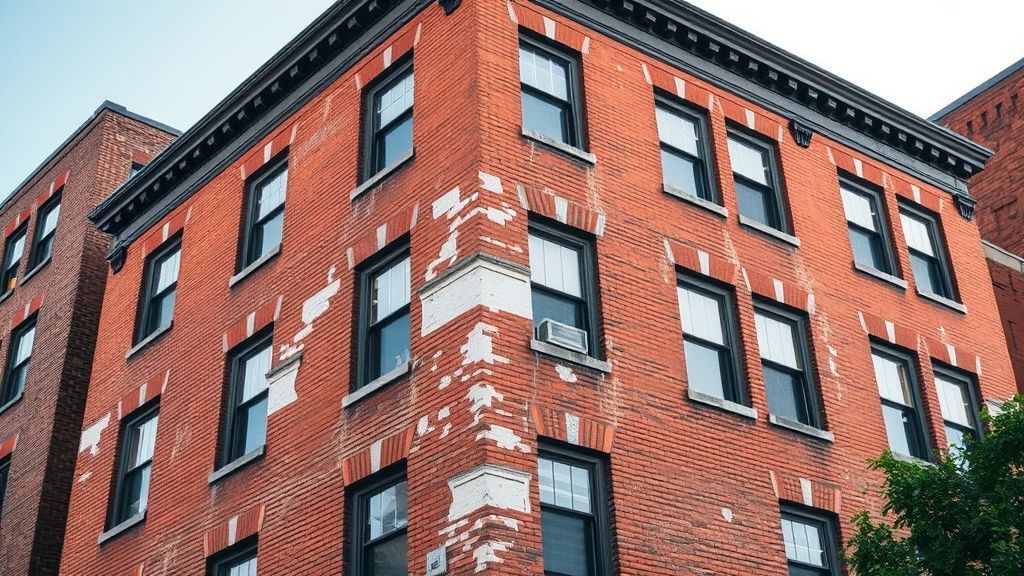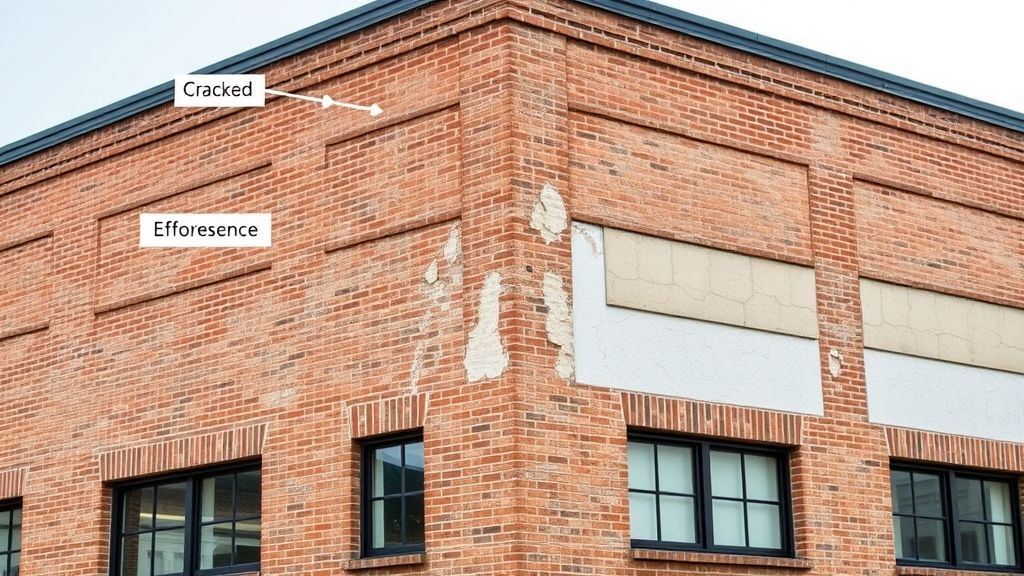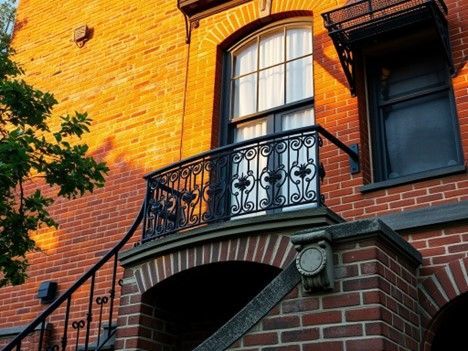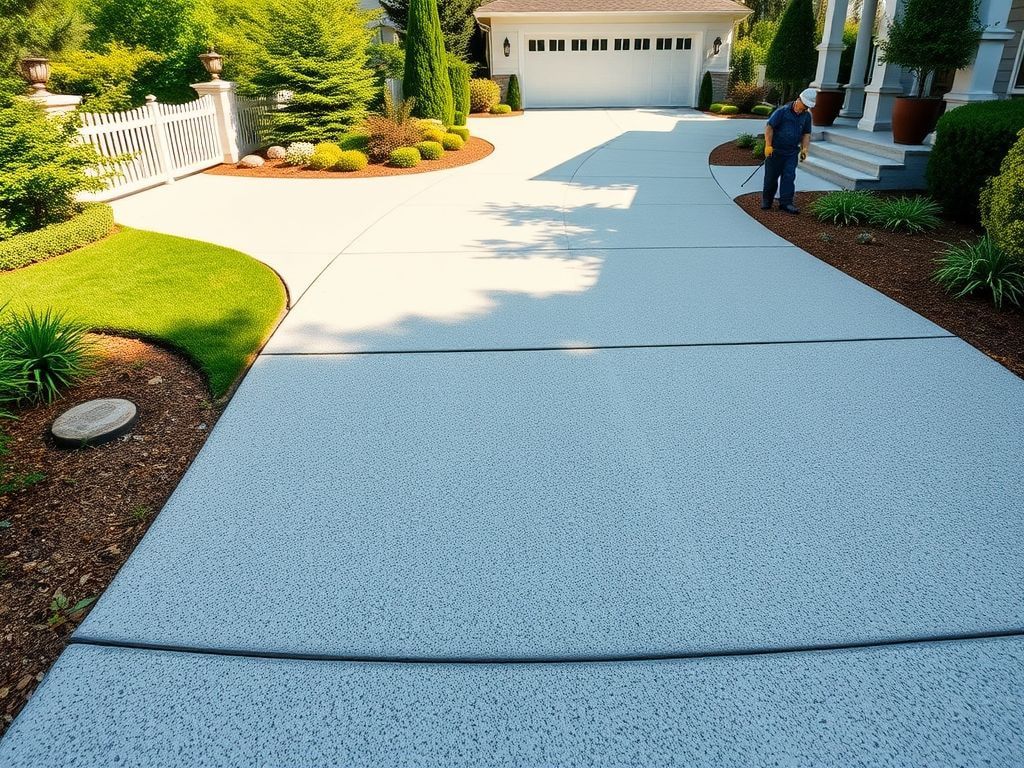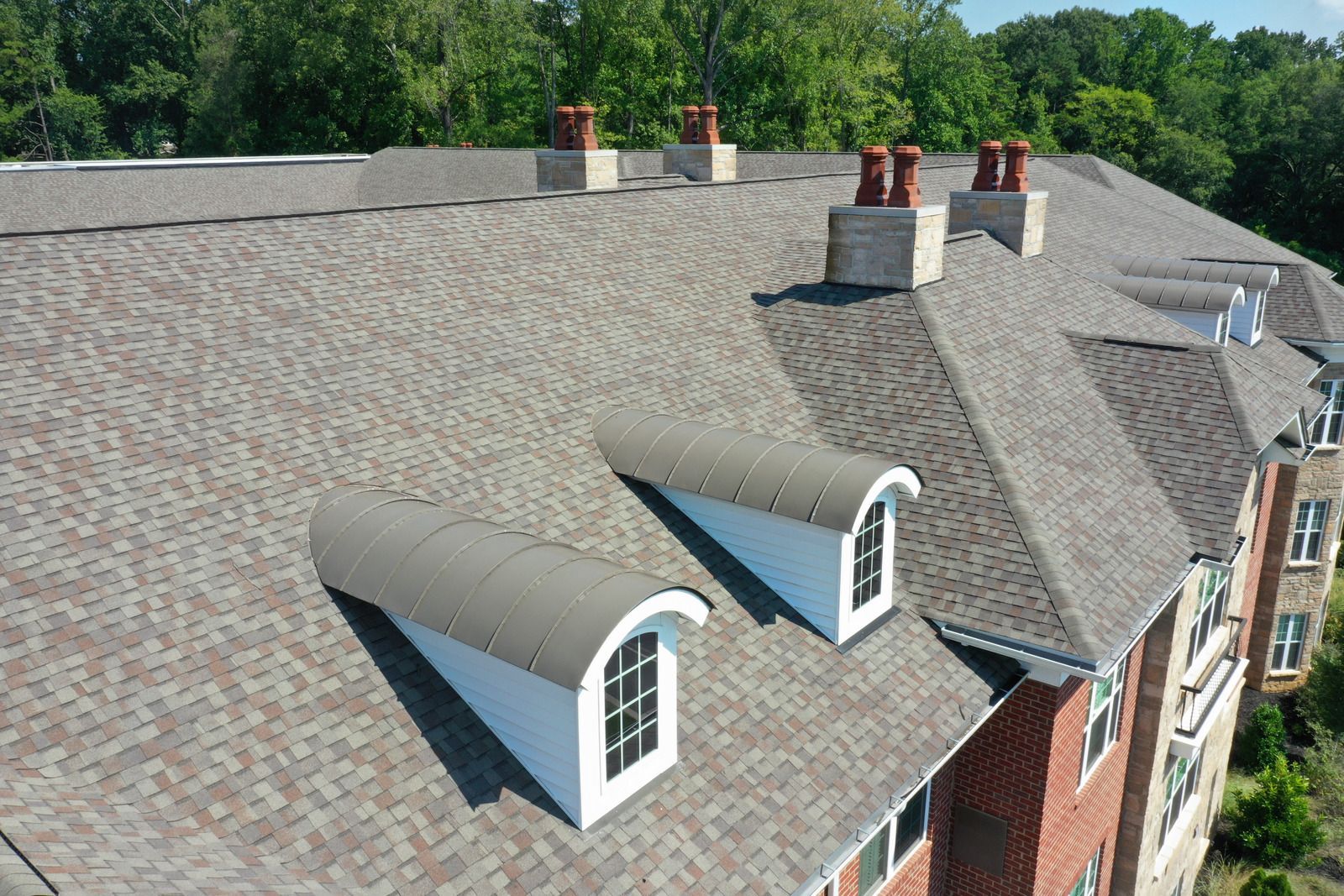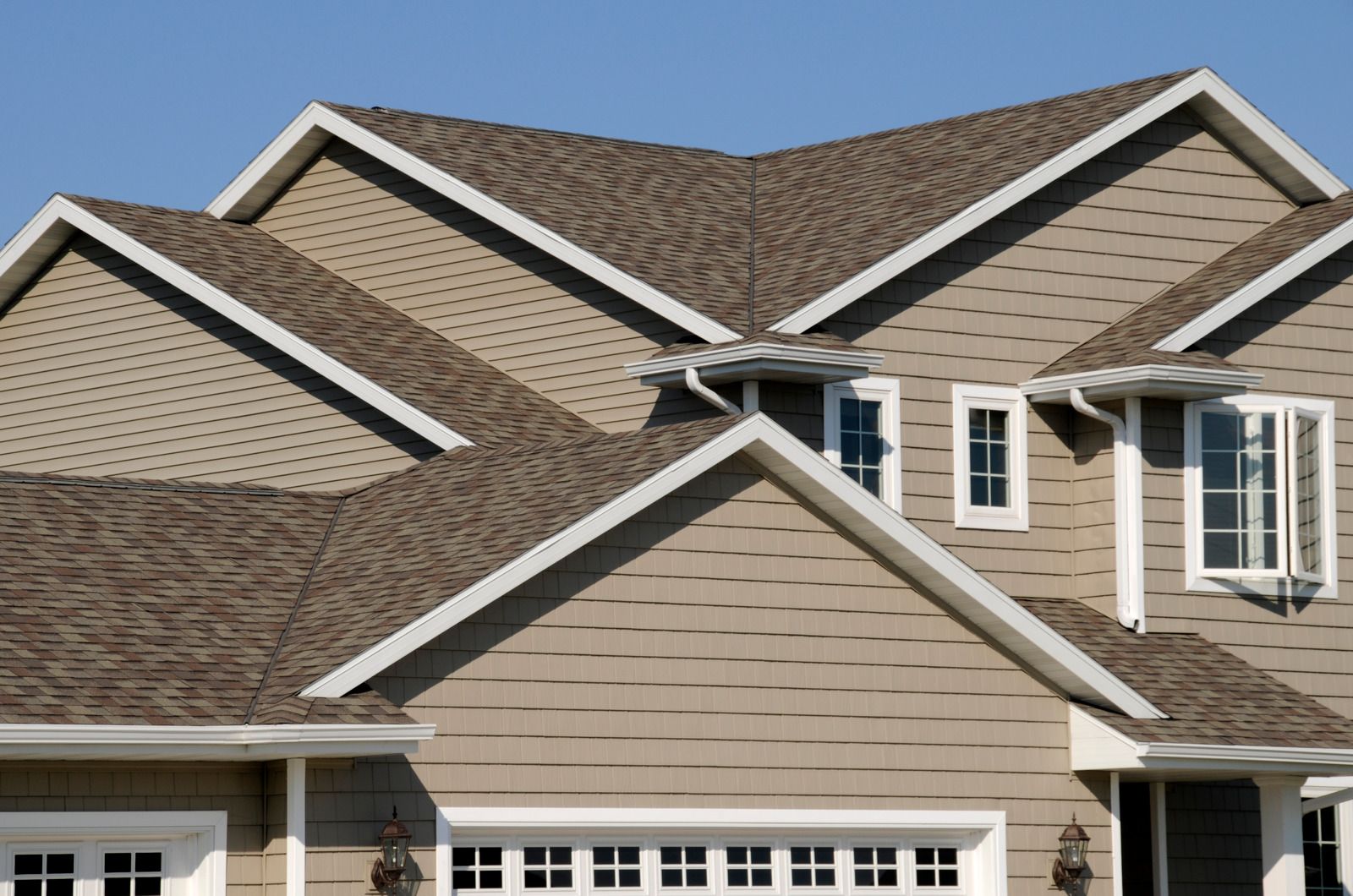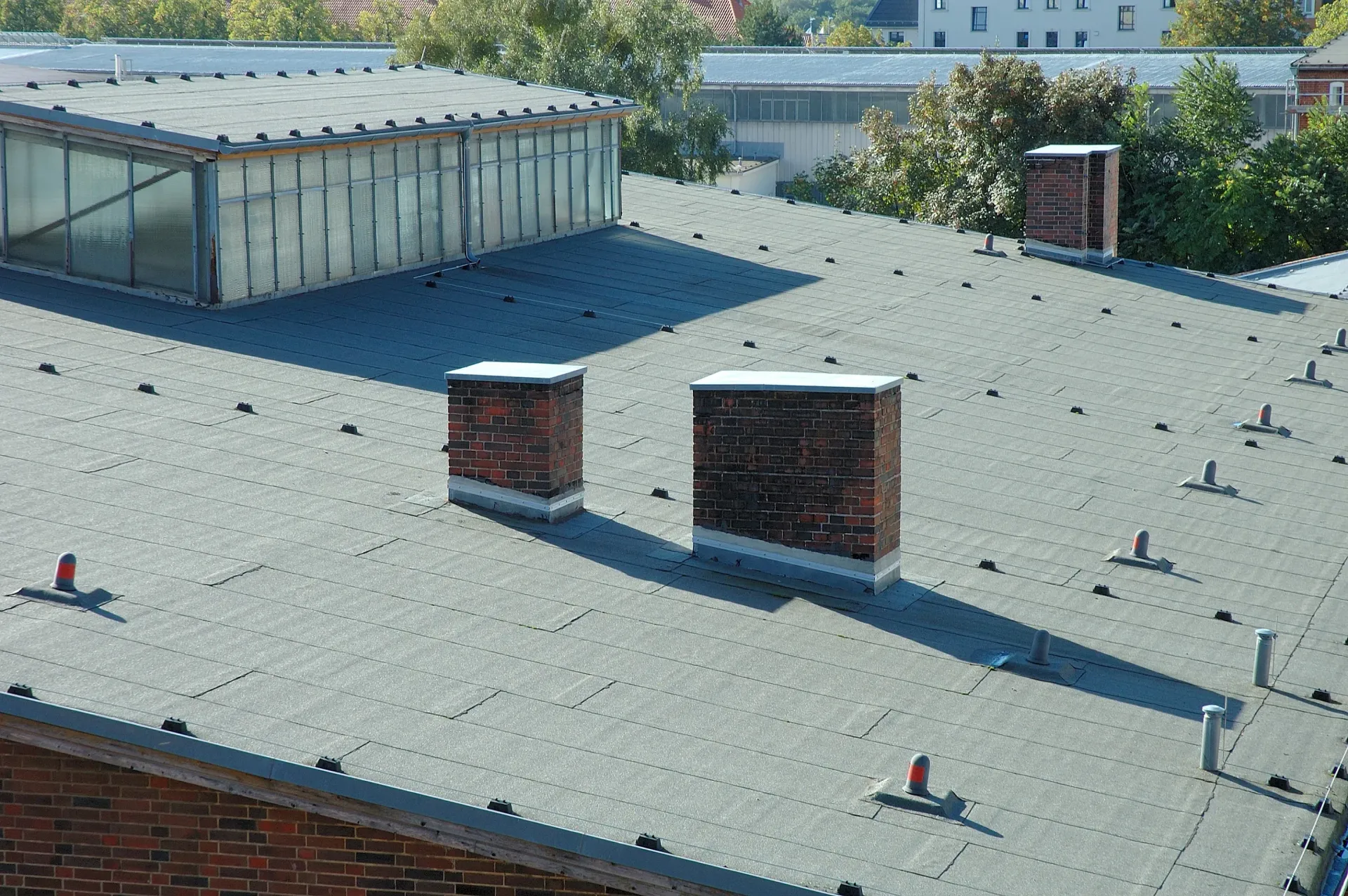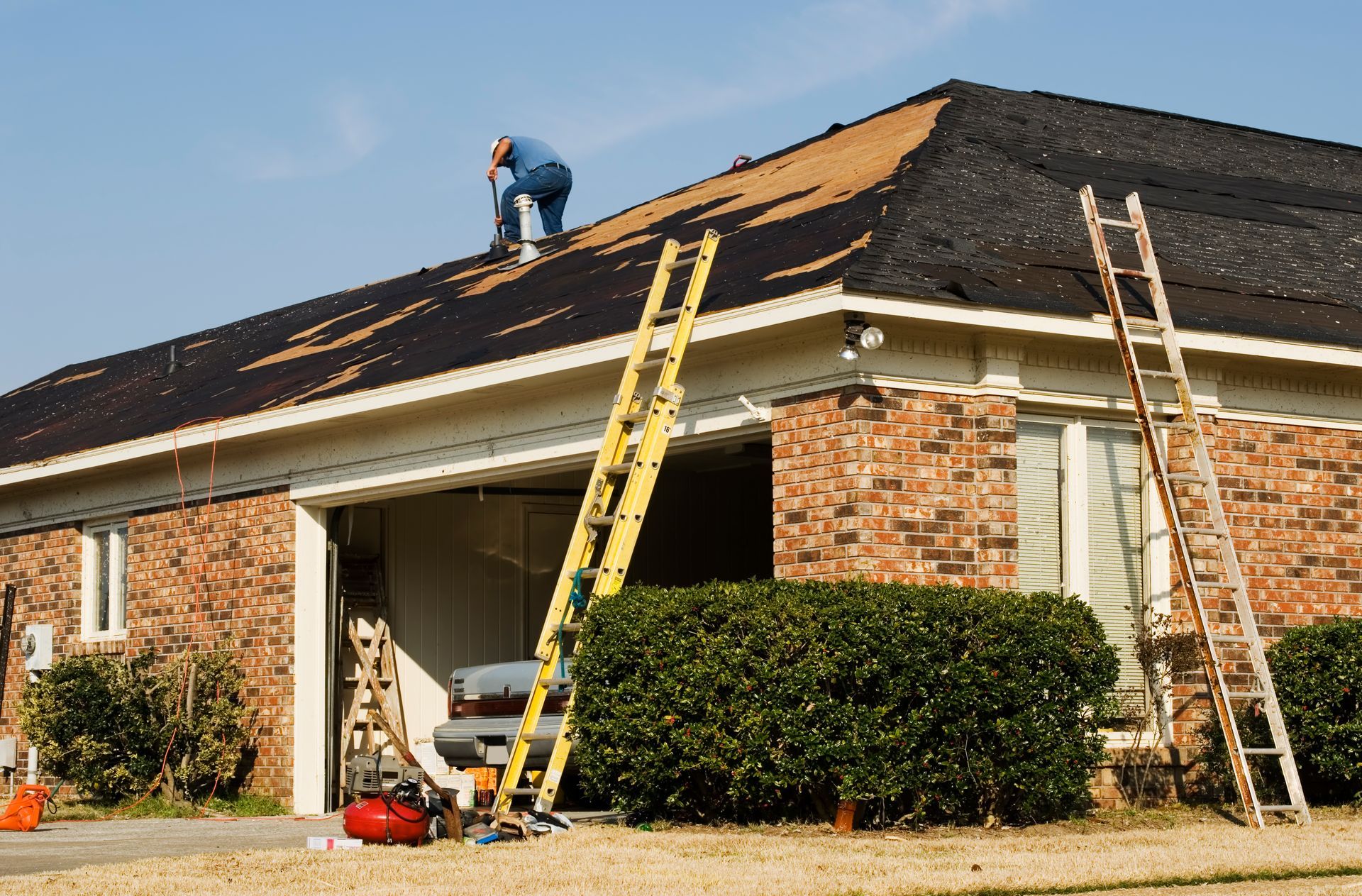Brick Pointing Maintenance Strategies: Balancing Budget Control with Building Preservation
Article at a Glance:
- Deferred brick pointing maintenance in Brooklyn commercial properties often leads to exponentially higher costs, with emergency repairs costing several times more than planned preventive work
- Understanding the unique characteristics of Brooklyn's historical buildings is crucial, as many pre-1930 structures require specific mortar compositions that differ significantly from modern formulations
- Strategic brick pointing maintenance requires systematic assessment, prioritization frameworks, and consideration of NYC's regulatory landscape including FISP/Local Law 11 requirements
- Quality contractor selection directly impacts maintenance longevity—poor installations may fail within a few years while quality work typically lasts decades
- Coordinating brick pointing with other facade maintenance can reduce total expenditures significantly through shared access costs and simplified project management
By approaching brick pointing as a strategic asset management function rather than an inevitable expense, Brooklyn commercial property professionals can extend building lifespans while optimizing maintenance budgets.
When that first small crack appears in your building's mortar joints, filing it under "next year's budget" might seem reasonable. Brooklyn commercial property managers juggle countless priorities against tightening budgets, but this decision can trigger escalating and expensive consequences.
Masonry maintenance represents one of the most significant challenges in preserving building value while controlling costs. Mortar joint deterioration—particularly in older buildings that define Brooklyn's architectural character—progresses subtly but accelerates once it begins.
This guide explores how commercial property professionals can develop strategic approaches to brick pointing maintenance that balance immediate budget concerns with long-term preservation goals. We'll examine decision-making frameworks, regulatory considerations specific to NYC properties, and methodologies for extending masonry lifespan while optimizing maintenance expenditures.
Understanding Brick Pointing Fundamentals in a Brooklyn Context
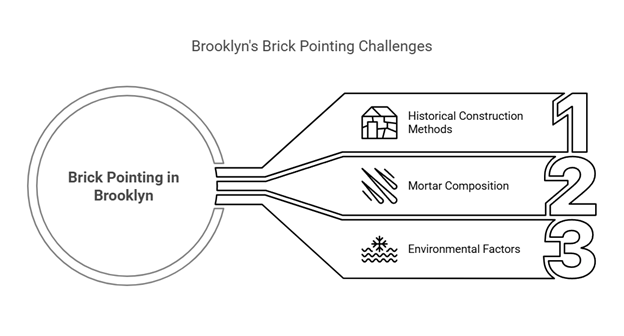
Brooklyn's commercial buildings face preservation challenges stemming from their historical significance, construction methods, and environmental conditions. Many structures in neighborhoods like DUMBO, Brooklyn Heights, and Williamsburg feature irreplaceable historic facades requiring specialized maintenance.
The composition of Brooklyn's historical buildings
Many commercial properties were constructed during distinct architectural periods, each with specific masonry techniques and materials. Buildings from the late 19th and early 20th centuries often feature load-bearing masonry walls with lime-based mortar compositions that differ significantly from modern formulations.
Buildings constructed before 1930 generally used softer mortars with higher lime content and lower compressive strength than modern Portland cement-based products. Using inappropriately hard modern mortars on these structures can cause brick spalling, accelerated deterioration, and significant facade damage.
Throughout years of consulting with pre-war commercial buildings, mortar composition analysis should precede maintenance planning. Many property managers discover that previous repairs with incompatible materials actually accelerated deterioration rather than preventing it.
How local climate and environmental factors affect deterioration
Brooklyn's proximity to saltwater bodies, including the East River and Upper New York Bay, creates distinctive deterioration patterns. Salt-laden moisture penetrates mortar joints, leading to efflorescence, spalling, and accelerated deterioration.
Freeze-thaw cycles in Brooklyn's climate represent a destructive force affecting masonry. Water penetrates deteriorating mortar joints, expands upon freezing, and gradually breaks down the mortar's structure. This cycle repeats each winter, with each instance widening existing cracks and creating new failure points.
Urban pollution adds specific maintenance challenges. Vehicle emissions, industrial pollutants, and urban grime combine with moisture to form mildly acidic compounds that gradually erode traditional mortar materials. Buildings along major traffic corridors like Atlantic Avenue or Flatbush Avenue may show faster deterioration patterns compared to similar structures on quieter streets.
Regulatory landscape for commercial building maintenance in NYC
Commercial property maintenance operates within a complex regulatory framework that impacts decision-making around brick pointing and facade maintenance. Understanding these requirements is essential for developing maintenance strategies that satisfy both preservation goals and compliance obligations.
New York City's Facade Inspection and Safety Program (FISP), formerly known as Local Law 11, mandates regular facade inspections for buildings over six stories. These inspections, required every five years, often identify deteriorating mortar joints that must be addressed within specific timeframes. Aligning brick pointing maintenance schedules with these inspection cycles maximizes efficiency and minimizes scaffolding costs.
For buildings in designated historic districts—which include significant portions of Brooklyn Heights, DUMBO, Fort Greene, and other neighborhoods—additional Landmarks Preservation Commission (LPC) requirements may apply. These can include restrictions on mortar composition, color matching requirements, and limitations on repair methodologies.
Recognizing the Real Costs of Deferred Maintenance
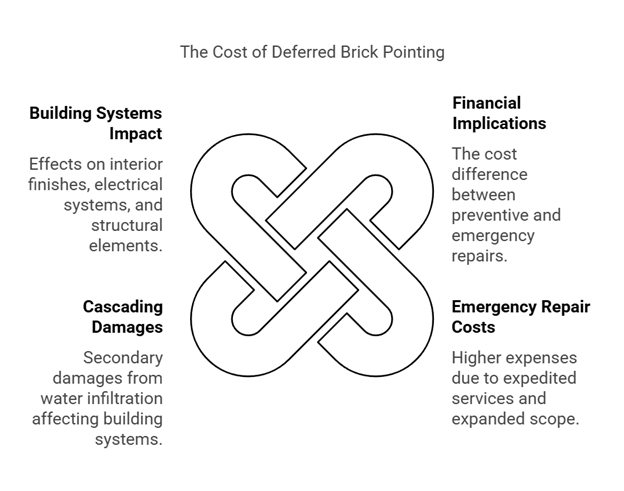
When commercial property managers defer brick pointing maintenance, they're not simply postponing an expense—they're potentially multiplying it. Understanding these implications helps build the business case for proactive intervention.
Financial analysis: Preventive vs. emergency repairs
The cost differential between planned preventive brick pointing and emergency repairs presents a compelling case for strategic maintenance. Emergency masonry repairs frequently cost 3-5 times more than planned maintenance addressing the same scope. This multiplier stems from several factors: expedited contractor premiums, emergency scaffolding installation, potential business interruption costs, and the expanded scope that accompanies emergency work.
Consider a scenario with Brooklyn commercial properties: an area of deteriorated mortar that might cost $25,000 to repoint during planned maintenance can generate $100,000+ in repairs when emergency water infiltration damages interior finishes, electrical systems, and tenant improvements. The case becomes stronger when factoring potential business interruption and tenant satisfaction impacts.
When preparing maintenance budgets, property managers should utilize life-cycle costing methodologies rather than simply comparing immediate expenditures. This approach accounts for total ownership cost over time, including accelerated deterioration once pointing begins to fail.
Impact of deterioration on building systems beyond the facade
Brick pointing deterioration rarely remains isolated to the exterior facade. As mortar joints fail, water infiltration affects multiple building systems, creating cascading failure points that increase repair costs and complexity.
Water infiltration through deteriorated mortar commonly damages:
- Interior wall finishes and plaster
- Electrical conduits and junction boxes mounted near exterior walls
- Window frames and surrounds
- Structural steel lintels and supports
- Insulation and vapor barriers
- HVAC ducting and equipment
These secondary damages may exceed the cost of the original pointing repairs, particularly in buildings housing valuable commercial equipment, inventory, or finely finished tenant spaces. The risk multiplies in older commercial buildings, where original construction methods may lack the water management systems found in modern buildings.
Developing a Strategic Brick Pointing Maintenance Plan
Effective brick pointing maintenance for Brooklyn commercial properties requires systematic assessment, prioritization, and planning rather than reactive responses to visible deterioration. A strategic approach aligns maintenance activities with budget cycles, tenant needs, and seasonal constraints.
Building assessment and deterioration mapping methodologies
Comprehensive facade assessment forms the foundation of strategic pointing maintenance. Rather than treating the entire building envelope as a single system, effective planning requires detailed mapping of conditions, prioritization of areas, and tracking of deterioration progression over time.
Professional facade assessments include:
- Close-range visual inspection from scaffolding or lifts
- Documentation of existing conditions with high-resolution photography
- Mortar sampling and testing for composition analysis
- Thermal imaging to identify subsurface moisture issues
- Deterioration mapping using standardized condition codes
- Prioritization recommendations based on severity and risk
For properties with complex or ornate facades, digital mapping technologies provide valuable planning tools. These systems create detailed facade "maps" that track deterioration over time, allowing property managers to identify acceleration patterns and optimize intervention timing.
Prioritization frameworks for phased maintenance
Few commercial properties have the luxury of addressing all brick pointing needs simultaneously. Effective maintenance strategies typically involve phased approaches based on deterioration severity, risk exposure, and budget constraints.
A practical prioritization framework might include these categories:
- Critical-priority areas: Active water infiltration, structural concerns, safety hazards
- High-priority areas: Advanced deterioration without current infiltration, areas at risk during coming season
- Medium-priority areas: Moderate deterioration requiring attention within 1-2 years
- Monitoring areas: Early deterioration suitable for regular inspection and planned future maintenance
This systematic approach allows property managers to address the most urgent needs while developing multi-year plans for remaining areas. When communicating with ownership and financial stakeholders, this structured methodology demonstrates thoughtful stewardship rather than reactive maintenance.
For properties under FISP/Local Law 11 jurisdiction, prioritization should align with inspection categorization (unsafe, SWARMP, or safe conditions) to ensure regulatory compliance while optimizing expenditures.
Seasonal considerations for Brooklyn's climate
Brooklyn's seasonal climate patterns impact both deterioration progression and optimal repair timing for brick pointing maintenance. Strategic planning must account for these factors to maximize repair durability and minimize weather-related complications.
Optimal pointing seasons in Brooklyn include:
- Late spring (May-June): After freeze-thaw cycles but before extreme heat
- Early fall (September-October): After summer heat but before frost risk
- Weather windows during moderate summer periods for smaller projects
These seasonal considerations become particularly important when balancing competing priorities. Critical repairs might justify winter work with specialized heating and enclosure systems, while less urgent areas might reasonably wait for optimal conditions to maximize quality and longevity.
Cost-Efficient Contractor Selection and Management
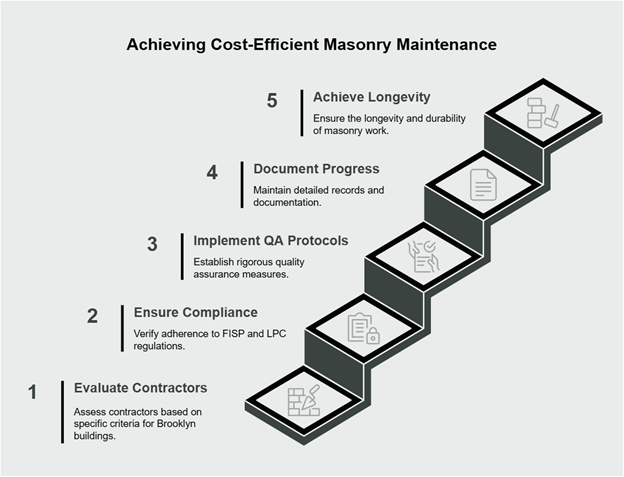
The quality of brick pointing work directly impacts its longevity, with poor installations often failing within 5-7 years while quality work typically lasts 30+ years. This dramatic lifecycle difference makes contractor selection one of the most significant cost factors in masonry maintenance.
Evaluation criteria for masonry specialists in Brooklyn
Brooklyn's rich architectural heritage and specific building stock has fostered specialized masonry contractors with experience in the borough's unique building types. Evaluating these contractors requires assessment criteria that go beyond simply comparing bid prices.
Effective contractor evaluation should consider:
- Specific experience with similar Brooklyn building types and age ranges
- Demonstrated knowledge of historical mortar compositions and matching techniques
- FISP and LPC compliance experience when applicable
- References from other Brooklyn commercial properties
- Project management systems and tenant coordination protocols
- Quality control procedures and documentation practices
- Insurance coverage specific to historic preservation work
- Financial stability and capacity for project completion
Documentation and quality assurance protocols
The hidden nature of much pointing work—often performed dozens of feet above ground level—makes rigorous quality assurance essential for ensuring value. Structured documentation and inspection protocols protect the property owner's interests while creating accountability throughout the maintenance process.
Comprehensive quality assurance programs include:
- Pre-construction documentation of existing conditions
- Mockup approvals with established standards for joint preparation and finishing
- Progressive inspections at critical phases (preparation, application, curing)
- Material testing and verification
- Photo documentation of completed areas
- Final inspection protocols with formal acceptance criteria
- Post-installation monitoring plan
These quality controls become particularly important for landmark buildings, where inappropriate work might trigger not only premature failure but also potential regulatory violations. The initial investment in proper oversight typically returns many times its cost through extended maintenance lifecycles.
Integration with Overall Building Preservation Strategy
Brick pointing maintenance exists within a broader building preservation context. Integrating pointing work with other facade elements and building systems creates efficiencies while ensuring comprehensive protection of the asset.
Coordinating pointing with other facade maintenance
Strategic coordination of brick pointing with other facade maintenance activities generates significant cost efficiencies through shared access costs and simplified project management. For Brooklyn commercial properties, particularly those requiring scaffolding or other expensive access systems, this coordination can reduce total expenditures by 15-25% compared to separate mobilizations.
Complementary facade work often coordinated with pointing includes:
- Lintel repairs or replacement
- Window perimeter sealing and waterproofing
- Parapet and coping stone repairs
- Decorative element restoration or stabilization
- Facade cleaning and protective treatments
- Sealant replacement at expansion joints
While coordination creates efficiencies, it also requires more complex project management and tenant communications. Successful implementation depends on thorough advance planning, clear scope delineation between contractors when multiple trades are involved, and comprehensive quality control programs that address all work elements.
Conclusion: Strategic Planning for Sustainable Building Preservation
Effective brick pointing maintenance for Brooklyn commercial properties requires balancing immediate budget constraints with long-term preservation goals. By implementing strategic assessment methodologies, prioritization frameworks, and lifecycle cost analyses, property managers can optimize maintenance expenditures while protecting building assets.
The key elements of a successful brick pointing strategy include:
- Systematic condition assessment and deterioration mapping
- Prioritization protocols that balance risk and resource constraints
- Multi-year planning aligned with budget cycles and seasonal considerations
- Quality-focused contractor selection and management
- Integration with comprehensive building preservation approaches
- Data-driven decision-making supported by monitoring technologies
By approaching brick pointing maintenance as a strategic asset management function rather than simply an inevitable expense, commercial property professionals can extend building lifespans, optimize maintenance budgets, and enhance property values while meeting their regulatory obligations.
The most successful property managers recognize that effective masonry maintenance represents not merely a cost of doing business but an investment in the building's future—one that delivers returns through reduced emergency repairs, enhanced tenant satisfaction, and preserved asset value. In Brooklyn's competitive commercial real estate market, this strategic approach to building preservation can create significant competitive advantages while protecting the borough's architectural heritage.
Frequently Asked Questions (FAQs)
Q: How do NYC Local Law 11/FISP requirements impact brick pointing maintenance schedules?
A: NYC's Facade Inspection and Safety Program creates both obligations and opportunities for strategic pointing maintenance. Buildings over six stories must undergo facade inspections every five years, with findings categorized as "unsafe" (requiring immediate attention), "SWARMP" (Safe With a Repair and Maintenance Program, requiring repairs within the five-year cycle), or "safe" (no action required).
Aligning brick pointing maintenance with these inspection cycles provides several advantages. First, scaffolding or other access costs can often be shared between inspection and repair activities. Second, addressing SWARMP conditions early in the cycle typically allows for more competitive contractor pricing compared to the rush of work often seen approaching FISP deadlines.
Property managers should maintain documentation demonstrating compliance with SWARMP repair requirements, as these records become critical during subsequent inspection cycles.
Q: What are the financial implications of different mortar types when considering long-term maintenance costs?
A: Mortar selection represents one of the most consequential decisions in brick pointing maintenance, with significant implications for both initial costs and long-term performance. The key consideration involves balancing material costs against expected service life, while ensuring compatibility with the building's existing masonry system.
Traditional lime-based mortars, while often more expensive to install due to longer curing requirements and greater labor sensitivity, typically provide better long-term performance in pre-1930s buildings. These softer mortars accommodate building movement and allow moisture migration without damaging adjacent brick, often lasting 30+ years when properly installed.
Modern Portland cement-based mortars typically offer lower initial costs but may create premature brick damage in older buildings due to their hardness and moisture impermeability. This damage often becomes evident 5-10 years after installation, creating significantly higher total lifecycle costs despite lower initial expenditures.
Q: How should property managers coordinate brick pointing work to minimize disruption to commercial tenants?
A: Tenant disruption represents a significant hidden cost in facade maintenance projects. Strategic coordination approaches can substantially reduce this impact while maintaining positive tenant relationships throughout the maintenance process.
Effective practices include:
- Advanced communication protocols with clear timeline expectations
- Phased implementation aligned with tenant-specific considerations
- Coordination with tenant business cycles (avoiding critical retail periods)
- Noise and dust mitigation plans with specific contractor requirements
- Special accommodations for sensitive tenant operations
- Regular progress updates with impact forecasting
- Clear problem resolution pathways for tenant concerns
Frequently Unasked Questions (FUQs)
Q: How does improper brick pointing affect insurance premiums and coverage for commercial properties?
A: The relationship between masonry maintenance and insurance considerations represents an often-overlooked aspect of property management that can significantly impact overall operating costs. Insurance underwriters increasingly evaluate maintenance practices when determining coverage terms and premiums, with facade condition being particularly influential for Brooklyn's older commercial buildings.
Deferred pointing maintenance can impact insurance in several ways:
- Premium increases following water damage claims
- Coverage exclusions for "maintenance-related" damage
- Higher deductibles for water infiltration coverage
- Documentation requirements following weather events
- Coverage limitations based on condition reporting
Property managers should maintain comprehensive records of pointing maintenance for insurance purposes, particularly documentation demonstrating proactive maintenance rather than reactive repairs. These records become especially valuable when responding to claims investigations where carriers attempt to classify damage as maintenance-related rather than sudden and accidental.
Q: What cross-departmental communication structures should exist between facilities, finance, and tenant relations regarding facade maintenance?
A: Effective brick pointing maintenance requires coordination across multiple organizational functions, yet many property management structures create silos that impede optimal decision-making. Creating intentional communication protocols between facilities, finance, and tenant relations departments generates better outcomes while reducing overall costs.
Productive cross-departmental structures might include:
- Quarterly facade condition briefings with facilities and finance teams
- Annual capital planning sessions incorporating tenant impact considerations
- Shared access to maintenance documentation systems
- Joint tenant communication protocols for maintenance impacts
- Integrated performance metrics that address both physical and financial outcomes
- Post-project assessments examining cross-functional impact
Organizations managing larger Brooklyn commercial portfolios often benefit from formal facade maintenance committees that bring together representatives from various departments. These structures ensure that maintenance decisions incorporate diverse perspectives while creating shared accountability for outcomes.
Q: How do current brick pointing decisions impact future adaptive reuse potential for Brooklyn commercial properties?
A: Brooklyn's commercial landscape continues evolving, with former industrial and warehouse buildings frequently transitioning to new uses. Current masonry maintenance decisions can significantly impact the feasibility and cost of these future adaptations—a consideration often overlooked in conventional maintenance planning.
Forward-looking considerations might include:
- Documentation preservation providing historical context for future architects
- Material selection supporting potential facade alterations
- Structural capacity preservation enabling different loading scenarios
- Aesthetic restoration maintaining features that might gain future value
- Environmental sustainability considerations for future certification requirements
Brooklyn neighborhoods experiencing rapid use transitions—including parts of Gowanus, Sunset Park, and East Williamsburg—particularly benefit from maintenance approaches that preserve future flexibility. Buildings likely to face adaptive reuse within their current pointing lifecycle should consider restoration approaches that maintain historical elements while accommodating potential facade modifications.
Protect Your Building’s Future with Expert Brick Pointing
Brick pointing isn’t just about fixing mortar—it’s about preserving your property’s structural integrity, historical character, and long-term value. At City Suburb, we specialize in expert brick pointing services tailored to the unique needs of Brooklyn’s commercial properties. Whether your building requires restoration to meet NYC’s FISP/Local Law 11 requirements or preventive maintenance to avoid costly repairs, our team delivers high-quality craftsmanship with customizable finishes that enhance your facade’s durability and appearance.
📞 Don’t wait for minor cracks to turn into major expenses! Contact City Suburb today for a consultation and ensure your property remains safe, secure, and visually stunning for years to come.
⭐⭐⭐⭐⭐ "City Suburb did some brick pointing on our house. They were timely and professional. They gave me a solid estimate, which is exactly what they charged when all was said and done. No surprises. They worked with our schedule and did such a good job we had them fix our roof a month later." – Eric Ducos
📲 Follow us for more project insights and updates:
